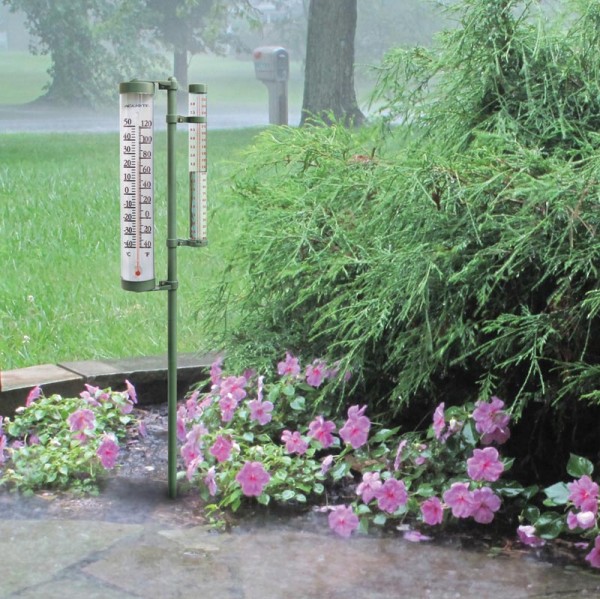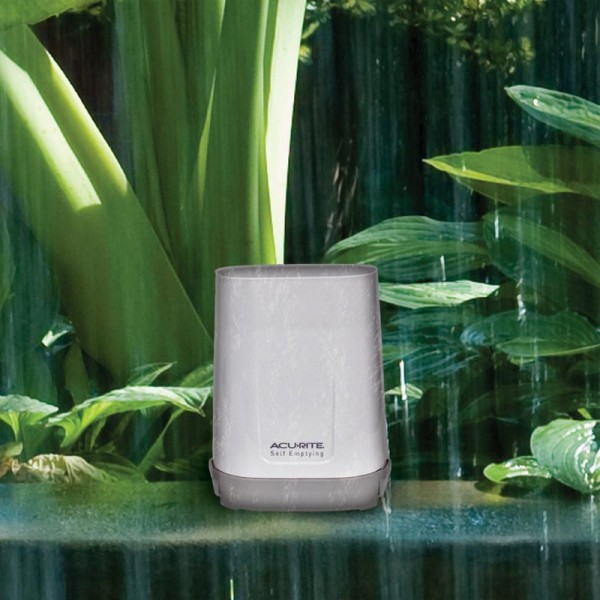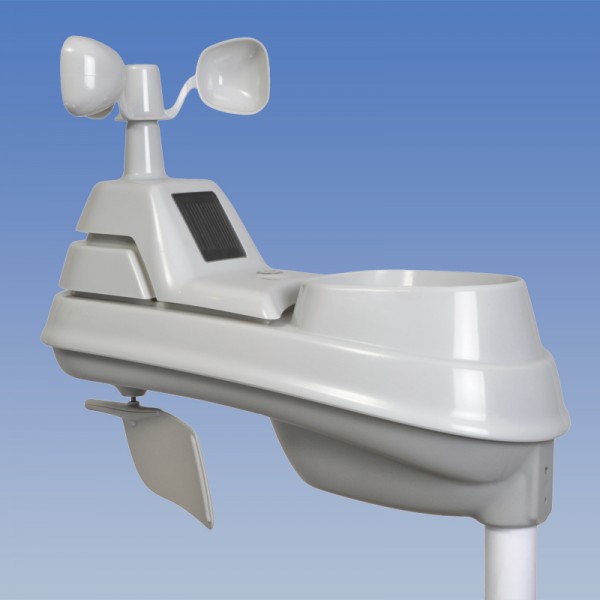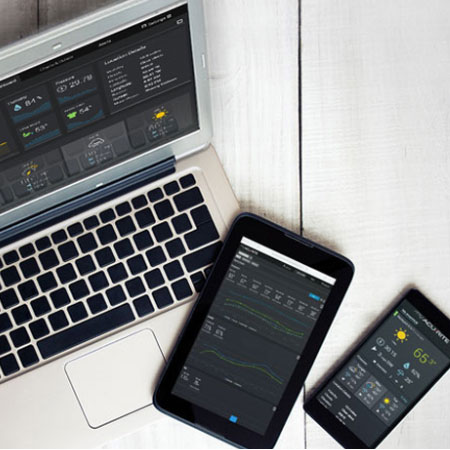How to Measure Rain with Rain Gauges
What is a Rain Gauge?
A rain gauge is a device to measure the amount of rainfall at any given location. A digital rain gauge self-empties and transmits the data electronically to a receiver, either a display or directly online to an app or website. An analog rain gauge requires manually reading the rainfall accumulation and emptying after every rainfall event.
What does a Rain Gauge Measure
A rain gauge is a useful weather tool that tells you how much rain has fallen right in your own back yard. Personal precipitation information is useful for making decisions about the amount of watering your lawn or garden requires. AcuRite rain gauges range from a simple rainfall collection device to being part of a sophisticated weather station.
To choose a rain gauge for your rain measurement needs, decide what information is important to you, and where to best place your rain gauge for optimal accuracy. Analog, or conventional, rain gauges tell you the amount of precipitation since the last time the rain gauge was emptied. Digital rain gauges include a variety of fascinating features, from daily rainfall amounts to flood alerts. A weather station collects different types of weather data, including rainfall data, and some models even allow you to access this data online or from a smartphone.
Types of Rain Gauges
1. Analog Rain Gauges
 Analog (or manual) rain gauges typically consist of a clear acrylic or glass cylinder, usually marked in inches and centimeters or millimeters. These devices may be mounted on a fence, deck rail, post, or placed in or on the ground. They should be located in an area where they are easy to access and empty, and should not have any obstructions over them (like the leaves from garden plants!) that could impact the accuracy of the rainfall reading.
Analog (or manual) rain gauges typically consist of a clear acrylic or glass cylinder, usually marked in inches and centimeters or millimeters. These devices may be mounted on a fence, deck rail, post, or placed in or on the ground. They should be located in an area where they are easy to access and empty, and should not have any obstructions over them (like the leaves from garden plants!) that could impact the accuracy of the rainfall reading.
Analog rain gauges vary in size and collection capacity. Some models are a decorative accent for your outdoor living space, others include features such as a magnified measurement scale for easy reading from a distance. Analog rain gauges are inexpensive and easy to use - you simply empty the container after obtaining a measurement.
2. Digital Rain Gauges

Digital rain gauges contain a rain sensor that allows for collection and analysis of precipitation data. These gauges consist of a self-emptying rain collector that transmits rain data wirelessly up to 330 feet away to an LCD display, which you can read from the comfort of your home.
The rain collector should be mounted to a deck railing, post, or other level surface away from obstructions such as trees or an overhanging roof. Digital rain gauges include features such as long and short-term rainfall records and alerts for potential flood conditions. A rain alert can remind you to bring things in from the backyard before they get soaked! A big advantage of digital rain gauges is that they are virtually maintenance-free — you never have to empty the rain collector.
3. Weather Station Rain Gauges

Rain data is just one of the many measurements taken by weather stations. AcuRite professional Weather Stations with Rain Gauges include all the features of digital rain gauges, plus precision measurements like indoor and outdoor temperature, humidity, barometric pressure, wind speed, and wind direction, all visible on a vivid display.
4. Track Rainfall Online or with a Rain App

What is a Rain Gauge Used for?
Rain Gauges are used to understand how much water your home and yard has received. Improve your lawn health and garden production, while also staying ahead of potential flooding or property damage, with real-time rainfall data and storm totals. From the neighborhood weather guru to the avid gardener. AcuRite rain gauges give you the tools you need to monitor and track your backyard rainfall. Looking for more? Here are five ways rain impacts your home and garden..





